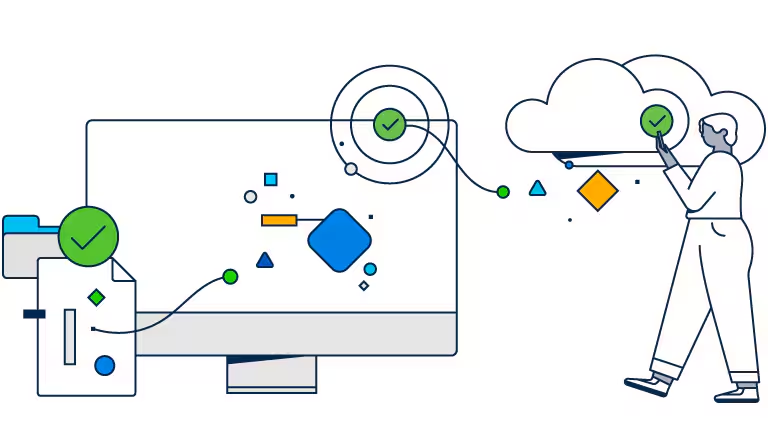In a rapidly digitizing world, cybersecurity is no longer a luxury but a necessity for both Australian corporations and government agencies. As cyber threats grow in sophistication and frequency, understanding the relative risk exposure of these entities becomes paramount. Interestingly, while corporations often face attacks aimed at financial gain, government agencies contend with threats targeting national security and critical infrastructure. This article delves into the intricacies of cybersecurity risks between these two sectors, examining who stands more at risk and why.
Understanding the Cyber Threat Landscape in Australia
Australia's digital economy is a critical driver of national growth, with the Reserve Bank of Australia (RBA) noting that digital transformation could contribute up to AUD 315 billion by 2030. However, this digital progression also introduces vulnerabilities, with the Australian Cyber Security Centre (ACSC) reporting a 13% increase in cyber incidents in 2022 alone. These statistics underscore the need for robust cybersecurity measures across all sectors.
Corporations: The Lure of Financial Gain
For corporations, the allure of financial gain makes them prime targets for cybercriminals. According to the Australian Bureau of Statistics (ABS), over 60% of Australian businesses have experienced a cyber attack, with phishing and ransomware being the most common methods. These attacks not only result in direct financial losses but also damage reputations and erode consumer trust.
Government Agencies: The Stakes of National Security
Government agencies, on the other hand, face threats that extend beyond financial ramifications. Cyber attacks on government systems can disrupt essential services, compromise national security, and affect public safety. The 2020 cyber attack on the Australian Parliament is a vivid example, highlighting the potential for significant geopolitical repercussions.
Risk & Threat Assessment
Corporations: Vulnerabilities and Mitigation
Corporations in sectors like finance, healthcare, and retail are especially vulnerable due to the sensitive nature of the data they handle. The financial sector, regulated by the Australian Prudential Regulation Authority (APRA), spends approximately 10% of its IT budget on cybersecurity to combat threats. Despite these investments, the dynamic nature of cyber threats demands continuous adaptation and vigilance.
Government Agencies: High-Value Targets for Cyber Espionage
Government agencies are high-value targets for cyber espionage, often attracting nation-state attackers. The ACSC has identified critical infrastructure sectors, including energy and communications, as highly susceptible to cyber threats. This vulnerability necessitates a strategic focus on securing sensitive information and systems integral to national operations.
Government Policy Analysis
Regulatory Frameworks and Their Impact
Australia's regulatory environment plays a pivotal role in shaping cybersecurity practices. The Australian Cyber Security Strategy 2020 outlines a comprehensive approach to enhancing national resilience against cyber threats. This strategy emphasizes collaboration between government entities and the private sector to bolster defenses.
The Australian Competition & Consumer Commission (ACCC) also enforces data protection regulations that impact how corporations handle consumer data. Compliance with these regulations not only safeguards consumer privacy but also mitigates potential financial penalties resulting from data breaches.
Investment in Cybersecurity: A National Priority
In response to escalating cyber threats, the Australian government has allocated AUD 1.67 billion over ten years to enhance national cyber resilience. This investment underscores the importance of safeguarding critical infrastructure and maintaining public confidence in digital services.
Real-World Case Studies
Case Study: ANZ Bank – Enhancing Cyber Resilience
Problem: ANZ Bank, a leading financial institution in Australia, faced increasing cyber threats targeting its digital banking channels.
Action: To bolster its defenses, ANZ invested in advanced threat detection systems and conducted regular cybersecurity drills. The bank also collaborated with the ACSC to share threat intelligence and improve response strategies.
Result: ANZ Bank achieved a 30% reduction in phishing attacks and improved incident response times by 50%, enhancing customer trust and safeguarding financial assets.
Takeaway: This case highlights the importance of a proactive approach to cybersecurity, leveraging technology and collaboration to mitigate risks.
Case Study: Australian Taxation Office (ATO) – Protecting Sensitive Data
Problem: The ATO manages vast amounts of sensitive taxpayer data, making it a prime target for cybercriminals.
Action: The ATO implemented a zero-trust architecture, ensuring strict verification processes for accessing sensitive information. Additionally, regular audits and vulnerability assessments were conducted to identify and rectify weaknesses.
Result: The ATO reported a 40% decrease in unauthorized access attempts, reinforcing its commitment to data protection and public trust.
Takeaway: Government agencies must prioritize data security through advanced architectures and continuous monitoring to protect sensitive information.
Common Myths & Mistakes
Myth vs. Reality
- Myth: Cybersecurity is solely an IT responsibility.
- Reality: Cybersecurity is a business-wide concern, requiring involvement from all departments to effectively mitigate risks.
- Myth: Only large corporations are targeted by cybercriminals.
- Reality: Small and medium-sized enterprises (SMEs) are increasingly targeted due to perceived vulnerabilities and lack of robust defenses.
Costly Mistakes to Avoid
- Underestimating the need for employee training: Human error accounts for over 90% of cyber incidents.
- Failing to update software and systems regularly: Outdated systems are prime targets for exploitation.
- Neglecting to conduct regular security audits: Without audits, vulnerabilities may go unnoticed until it's too late.
Future Trends & Predictions
As cyber threats continue to evolve, so too must the strategies employed to combat them. By 2026, it is predicted that 70% of Australian businesses will adopt AI-driven cybersecurity solutions to enhance threat detection and response capabilities. Additionally, the integration of blockchain technology in securing transactions and data integrity will become more prevalent, offering new layers of protection.
Conclusion
In the battle between Australian corporations and government agencies, both face unique cybersecurity challenges. While corporations are often targeted for financial gain, government agencies contend with threats to national security. By investing in advanced technologies, fostering collaboration, and adhering to regulatory frameworks, both sectors can enhance their resilience against cyber threats.
As the digital landscape continues to evolve, staying informed and proactive is crucial. What strategies have worked for your organization in addressing cybersecurity risks? Share your insights and join the discussion below.
People Also Ask
- How does cybersecurity impact businesses in Australia? Cybersecurity is crucial for protecting sensitive data and maintaining consumer trust. Businesses investing in robust cybersecurity measures report a 30% reduction in data breaches, according to Deloitte.
- What are the biggest misconceptions about cybersecurity? One common myth is that cybersecurity is solely an IT responsibility. However, research from the ACSC shows it requires a business-wide approach.
- What upcoming changes in Australia could affect cybersecurity? By 2026, policy updates in data protection and privacy could shift the cybersecurity landscape—stay ahead by adopting AI-driven solutions.
Related Search Queries
- Cybersecurity trends in Australia 2025
- Government cybersecurity strategies 2023
- Australian cybersecurity regulations
- Corporate cybersecurity best practices
- Future of cybersecurity in Australia

















clarezmt09193
8 months ago